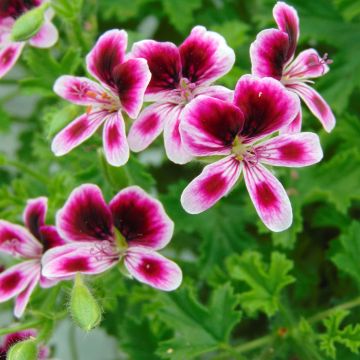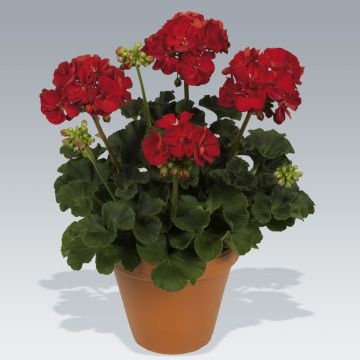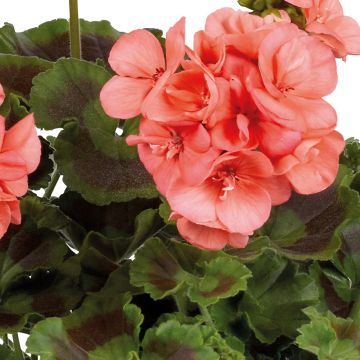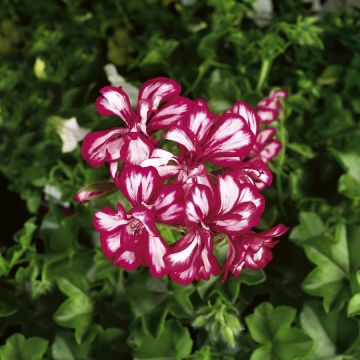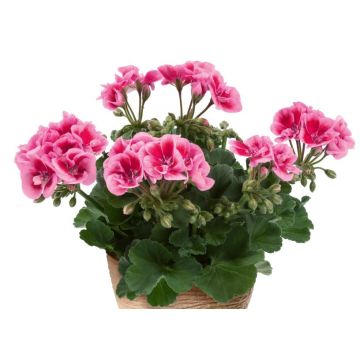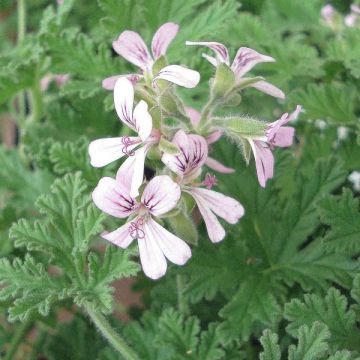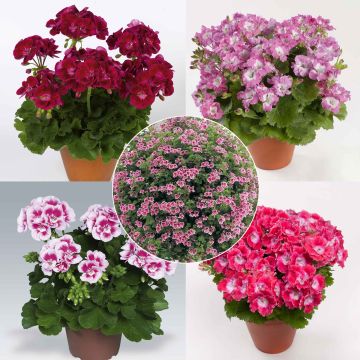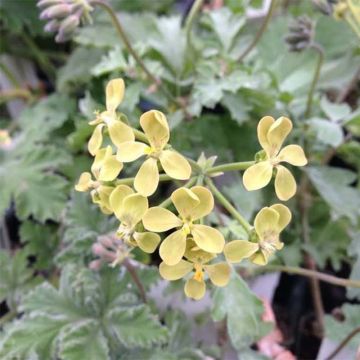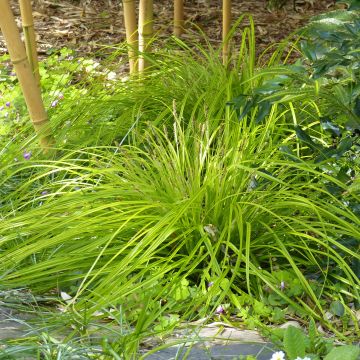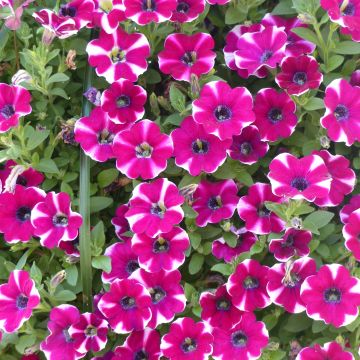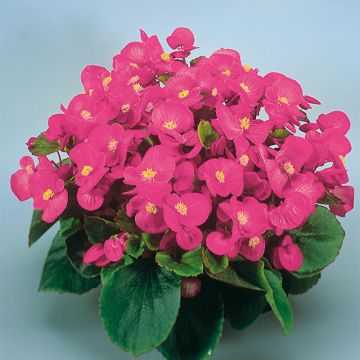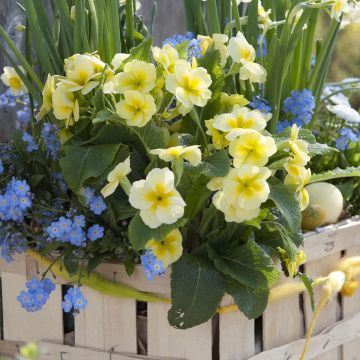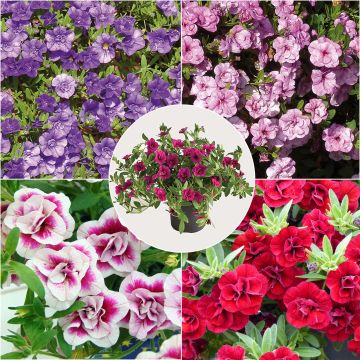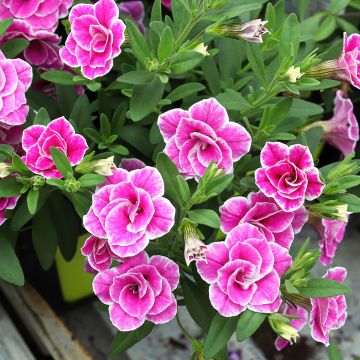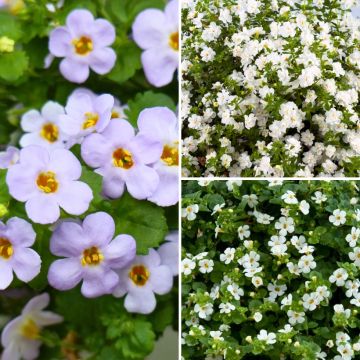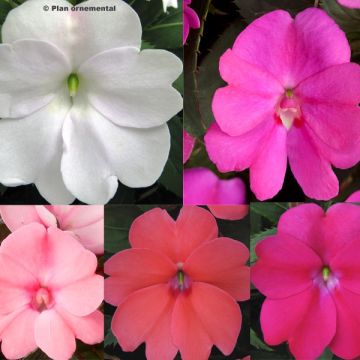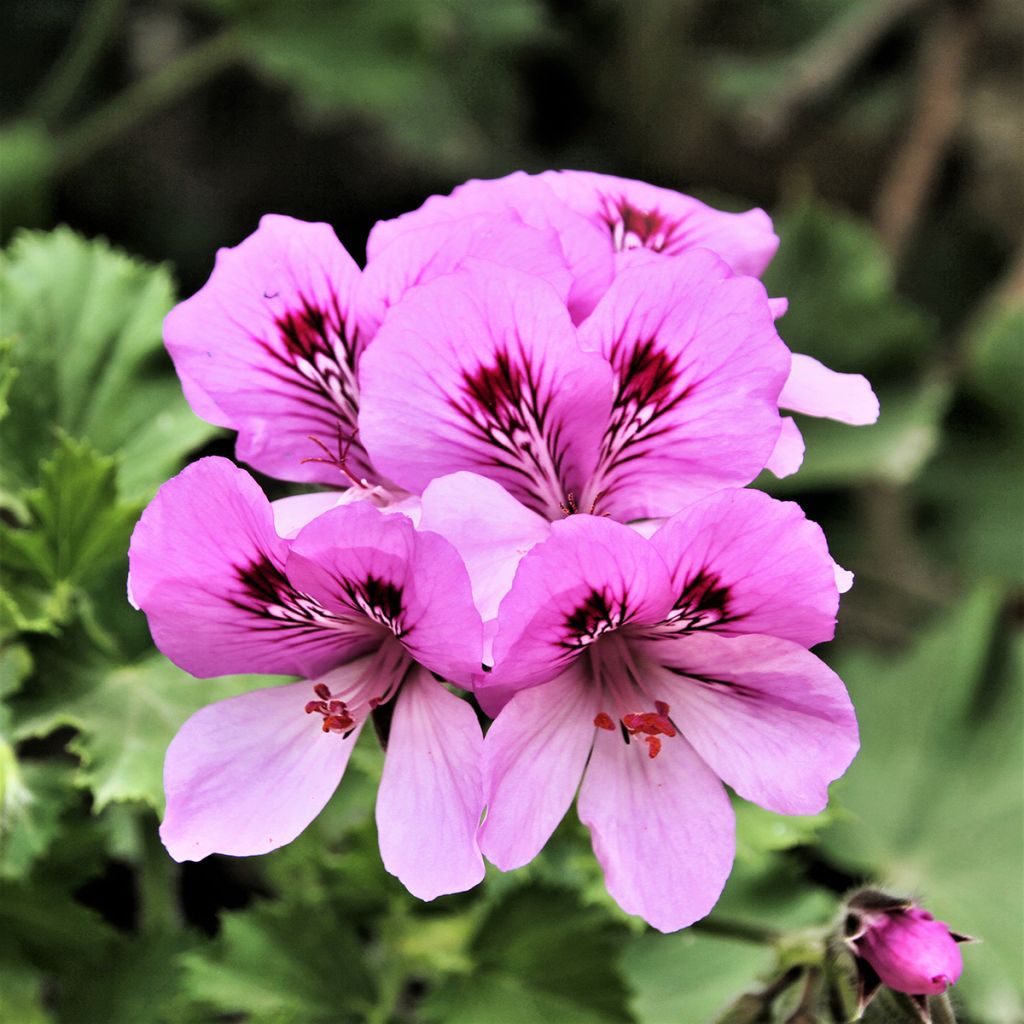

Pelargonium odorant Cola Bottles - Géranium parfum Coca Cola
Pelargonium nervosum Cola Bottles
Pelargonium x nervosum Cola Bottles
Geranium, Storksbill
This item cannot be shipped to the selected country
Delivery charge from €5.90
More information
Schedule delivery date,
and select date in basket
This plant carries a 6 months recovery warranty
More information
We guarantee the quality of our plants for a full growing cycle, and will replace at our expense any plant that fails to recover under normal climatic and planting conditions.
From €5.90 for pickup delivery and €6.90 for home delivery
Express home delivery from €8.90.
Does this plant fit my garden?
Set up your Plantfit profile →
Description
The Pelargonium 'Cola Bottles' develops foliage with an astonishing and realistic Cola scent. It more precisely evokes a reminiscence of Cola bottle-shaped sweetss. It is a fragrant geranium with dark green, trilobed, undulate, and dentate leaves. In summer, light pink flowers bloom, two petals veined with purple. Over time, the plant forms a small, evergreen bush with a very upright habit, and its scent is perceptible with the slightest touch. It blooms from June to September. Grow it in full sun, in well-drained soil, as it is sensitive to excess water. Growing it in the ground is only possible in mild climates, spared from frost.
The Pelargonium 'Cola Bottles' belongs to the geranium family. It is a variety resulting from the hybrid Pelargonium x nervosum, itself descended from the botanical species Pelargonium crispum. 'Cola Bottles' is a woody and perennial bush with a rounded habit, sensitive to frost but resistant to water scarcity. Its habit is supported by stiff, strong, and minimally branched stems, allowing the plant to reach about 40 to 50 cm (16 to 20in) height with a spread of 50 cm (20in). The entire plant emits a very pleasant scent, evoking Cola. Its foliage consists of small, round leaves divided into 3 lobes, undulate, with serrated edges, and villous. Their colour is dark green. Flowering occurs from June to September, with clustered flowers counting 5 pale pink petals, two veined with purple.
Plant the Pelargonium 'Cola Bottles' in a pot or in the ground, where you can touch and admire it, along a pathway or in a large pot, on the terrace or in the conservatory. Scented geraniums are precious for perfuming a room, where they delight us with their sometimes unexpected and wonderful scents. In very mild climates, it is a plant that perfectly withstands summer drought and requires very little maintenance, making it valuable for dry gardens by the seaside.
The plant's leaves are often used in perfumery to extract an aromatic essence, while in England, the flowers are picked to add flavour to jellies. You can also try using scented pelargonium flowers to add flavour to your recipes. The leaves are also edible and can be used in fruit salads and potpourri.
Report an error about the product description
Pelargonium nervosum Cola Bottles in pictures
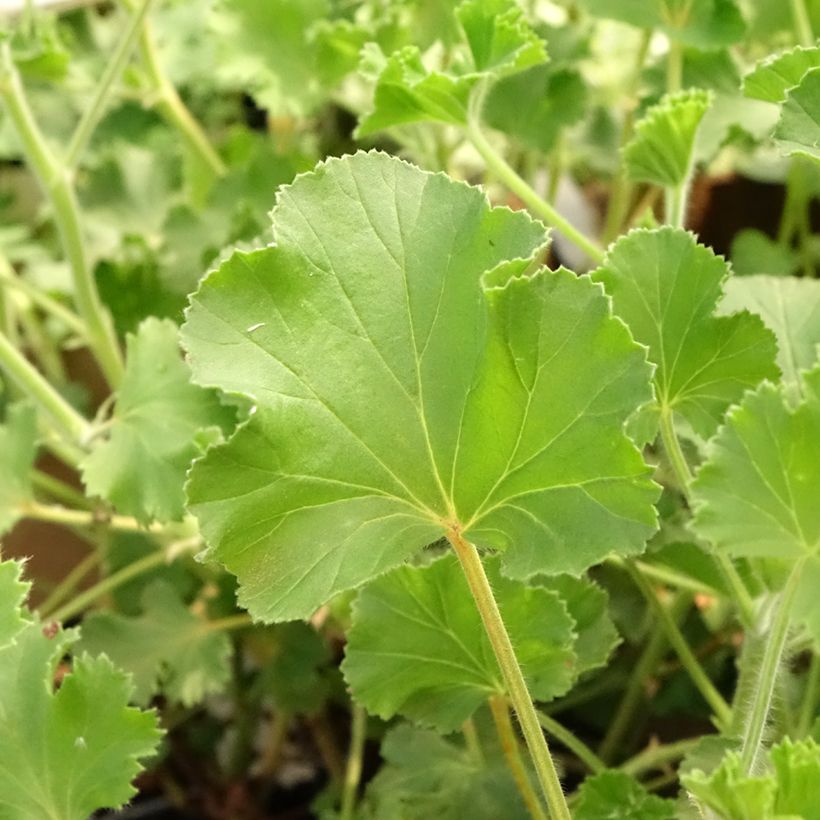

Flowering
Foliage
Plant habit
Botanical data
Pelargonium
x nervosum
Cola Bottles
Geraniaceae
Geranium, Storksbill
Cultivar or hybrid
Other Pelargonium - Geranium
Planting and care
Plant your Pelargonium in the open ground after the last frosts, in a very sunny position to accentuate the colours of the foliage and encourage flowering. You can also plant them in a pot in a protected spot, which you will take out in May. If you plant them in the ground, wait until after the frosts. Fragrant geraniums need well-drained, but not necessarily very rich, or even slightly chalky soil. Water sparingly. In pots, regular watering is necessary in summer. You can keep your geraniums by putting them in a cold conservatory or greenhouse in winter. They can withstand a light frost (-3/-4°C), but will not overwinter in the garden, except by the sea.
Planting period
Intended location
Care
This item has not been reviewed yet - be the first to leave a review about it.
Plug plants - Annuals
Haven't found what you were looking for?
Hardiness is the lowest winter temperature a plant can endure without suffering serious damage or even dying. However, hardiness is affected by location (a sheltered area, such as a patio), protection (winter cover) and soil type (hardiness is improved by well-drained soil).

Photo Sharing Terms & Conditions
In order to encourage gardeners to interact and share their experiences, Promesse de fleurs offers various media enabling content to be uploaded onto its Site - in particular via the ‘Photo sharing’ module.
The User agrees to refrain from:
- Posting any content that is illegal, prejudicial, insulting, racist, inciteful to hatred, revisionist, contrary to public decency, that infringes on privacy or on the privacy rights of third parties, in particular the publicity rights of persons and goods, intellectual property rights, or the right to privacy.
- Submitting content on behalf of a third party;
- Impersonate the identity of a third party and/or publish any personal information about a third party;
In general, the User undertakes to refrain from any unethical behaviour.
All Content (in particular text, comments, files, images, photos, videos, creative works, etc.), which may be subject to property or intellectual property rights, image or other private rights, shall remain the property of the User, subject to the limited rights granted by the terms of the licence granted by Promesse de fleurs as stated below. Users are at liberty to publish or not to publish such Content on the Site, notably via the ‘Photo Sharing’ facility, and accept that this Content shall be made public and freely accessible, notably on the Internet.
Users further acknowledge, undertake to have ,and guarantee that they hold all necessary rights and permissions to publish such material on the Site, in particular with regard to the legislation in force pertaining to any privacy, property, intellectual property, image, or contractual rights, or rights of any other nature. By publishing such Content on the Site, Users acknowledge accepting full liability as publishers of the Content within the meaning of the law, and grant Promesse de fleurs, free of charge, an inclusive, worldwide licence for the said Content for the entire duration of its publication, including all reproduction, representation, up/downloading, displaying, performing, transmission, and storage rights.
Users also grant permission for their name to be linked to the Content and accept that this link may not always be made available.
By engaging in posting material, Users consent to their Content becoming automatically accessible on the Internet, in particular on other sites and/or blogs and/or web pages of the Promesse de fleurs site, including in particular social pages and the Promesse de fleurs catalogue.
Users may secure the removal of entrusted content free of charge by issuing a simple request via our contact form.
The flowering period indicated on our website applies to countries and regions located in USDA zone 8 (France, the United Kingdom, Ireland, the Netherlands, etc.)
It will vary according to where you live:
- In zones 9 to 10 (Italy, Spain, Greece, etc.), flowering will occur about 2 to 4 weeks earlier.
- In zones 6 to 7 (Germany, Poland, Slovenia, and lower mountainous regions), flowering will be delayed by 2 to 3 weeks.
- In zone 5 (Central Europe, Scandinavia), blooming will be delayed by 3 to 5 weeks.
In temperate climates, pruning of spring-flowering shrubs (forsythia, spireas, etc.) should be done just after flowering.
Pruning of summer-flowering shrubs (Indian Lilac, Perovskia, etc.) can be done in winter or spring.
In cold regions as well as with frost-sensitive plants, avoid pruning too early when severe frosts may still occur.
The planting period indicated on our website applies to countries and regions located in USDA zone 8 (France, United Kingdom, Ireland, Netherlands).
It will vary according to where you live:
- In Mediterranean zones (Marseille, Madrid, Milan, etc.), autumn and winter are the best planting periods.
- In continental zones (Strasbourg, Munich, Vienna, etc.), delay planting by 2 to 3 weeks in spring and bring it forward by 2 to 4 weeks in autumn.
- In mountainous regions (the Alps, Pyrenees, Carpathians, etc.), it is best to plant in late spring (May-June) or late summer (August-September).
The harvesting period indicated on our website applies to countries and regions in USDA zone 8 (France, England, Ireland, the Netherlands).
In colder areas (Scandinavia, Poland, Austria...) fruit and vegetable harvests are likely to be delayed by 3-4 weeks.
In warmer areas (Italy, Spain, Greece, etc.), harvesting will probably take place earlier, depending on weather conditions.
The sowing periods indicated on our website apply to countries and regions within USDA Zone 8 (France, UK, Ireland, Netherlands).
In colder areas (Scandinavia, Poland, Austria...), delay any outdoor sowing by 3-4 weeks, or sow under glass.
In warmer climes (Italy, Spain, Greece, etc.), bring outdoor sowing forward by a few weeks.

































